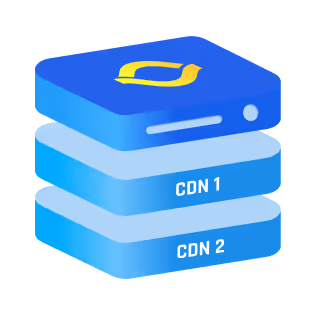The convergence of serverless and edge computing has led to a new revolution in the tech sphere known as Edge Serverless. This combination of architectures has promised to deliver both the on-demand function execution of serverless computing, and the low latency benefits of edge computing.
Will this potent mix of efficiency and speed dawn a brand new era, or is it just another cheap gimmick? This article aims to explore the nuances of Edge Serverless, its pros and cons, along with its real world applications.
Today, this technology is being widely adopted across e-commerce, gaming, and SaaS.
What is Edge Serverless?
Edge Serverless is considered a revolution - it’s a movement that’s a result of raising dynamic traffic, but what exactly is it?
Edge Serverless allows computations to occur right at the edge nodes of a Content Delivery Network (CDN). The execution of functions close to the end users results in reduced latency, making it an ideal choice for real-time applications.
With this capability at edge, you can write cloud functions of APIs, aggregate the responses, and consolidate your learnings by developing edge function applications and bring dynamic traffic content closer to the end-users.
As it bridges the gap between serverless and edge computing, Edge Serverless is addressing the challenge of achieving efficiency and speed simultaneously.
{{cool-component}}
Edge Serverless Architecture: Functions + PoPs + Origin
Edge serverless platforms glue together three architectural tiers (functions, points of presence (PoPs), and a traditional origin) into a single request pipeline.
Request Flow
- DNS resolution / Anycast sends the user to the geographically nearest PoP.
- Edge function runs within that PoP.
- May serve a fully rendered page, fetch from an external API, or rewrite a path.
- If data is not available locally and the function requires origin resources, it makes a secure fetch to the origin, often over optimized backbone links (Smart-Route, Private Link).
- Response is optionally cached at the PoP for subsequent users; the function can set TTLs or caching headers dynamically.
Pros and Cons of Edge Serverless
Thanks to its hybrid nature, Edge Serverless offers an impressive set of benefits. For starters, it combines the scalable and cost-effective traits of serverless with the real-time and low-latency characteristics of edge computing.
However, just like any technology, it cannot be considered perfect. Here’s why:
Examples of Use Cases Using Edge Serverless?
Let’s start by seeing Edge Serverless at work in specialized A/B Testing:
A user navigates to your website. They’re here to explore, learn, and perhaps make a purchase. In an effort to optimize their experience, your team has been developing two different web page designs.
But which one will be more engaging and effective for your user base? That’s where A/B testing comes in, and Edge Serverless plays an important role in this process:
- The user’s request, instead of traveling to a far-off datacenter, reaches the geographically closest edge node. The data travel distance is slashed, leading to significantly faster processing times.
- At this nearest edge node, an edge function springs into action. Instead of merely initiating a process, this function serves a more intricate role.
- The edge function is designed to randomly assign the user to either version A or version B of the webpage. It’s a division of your user base - half of your visitors will interact with one version, the other half with the other.
- Thanks to the proximity of the edge node, the chosen version of the webpage is delivered almost instantaneously to the user. It’s a seamless experience for them, and behind the scenes, Edge Serverless is doing the heavy lifting.
- As the users interact with the versions of the webpage, the edge function is also busy collecting data about their behavior, engagement, and eventual outcomes - say, making a purchase or signing up for a newsletter.
- As all of this occurs, the beauty of Edge Serverless’s pay-per-use model becomes evident. You’re only incurring costs as functions execute, keeping your expenses tightly controlled while gathering invaluable data for your optimization efforts.
Now, with the data gathered and processed at the edge nodes, your team can evaluate the results of the A/B test. Which version of the webpage was more successful in engaging users and encouraging the desired outcome? You have the data-driven insights to answer this question.
Conclusion
In essence, it’s safe to say that Edge Serverless isn’t just another buzzword. It’s a potent mix of efficiency, scalability, and low latency. As this technology continues to evolve, it might well be the path to a faster, more efficient digital world.
FAQs
1. How does Edge Serverless differ from traditional serverless or edge computing models?
Traditional serverless runs in regional clouds; edge computing deploys workloads on PoPs you manage. Edge Serverless fuses them: event-driven functions auto-deployed to dozens or hundreds of PoPs, no infrastructure upkeep, yet executed within microseconds of users. It effectively erases the line in the serverless computing vs edge computing debate.
2. Why is Edge Serverless considered a revolutionary approach for handling dynamic, real-time web traffic?
By executing personalization or validation at the closest PoP, serverless edge computing removes cross-continent round-trips. Users see first paint before a centralized system would even receive the request. This instant feedback loop makes dynamic advertising, stock quotes, or chat feel native, redefining expectations for latency-sensitive, real-time web traffic.
3. What are the main advantages of Edge Serverless?
Edge Serverless inherits cloud autoscaling while adding global locality. Benefits include sub-50 ms latency, granular pay-per-invoke pricing, built-in TLS, reduced origin egress, and sandbox isolation. Teams deploy code once and instantly reach every region, turning complex edge computing vs serverless trade-offs into a single, streamlined operating model.
4. How does Edge Serverless support real-time applications like A/B testing, gaming, e-commerce personalization, and IoT analytics?
Functions at PoPs can randomly route traffic, compute game state deltas, tailor product catalogs, or aggregate sensor bursts, then stream results via WebSockets or Pub/Sub; all without detouring to a distant region. This low-latency choreography is why edge computing serverless excels for A/B testing, gaming, personalization, and IoT analytics.
5. When should an organization consider adopting Edge Serverless over other cloud or edge solutions?
Choose Edge Serverless when user experience suffers above 100 ms, traffic is globally spiky, or data residency laws demand local execution. Stateless APIs, personalization layers, or security filters migrate first. If managing edge VMs feels heavy, this fusion delivers speed and simplicity without sacrificing the serverless pay-as-you-go model.



.png)
.png)
.png)






